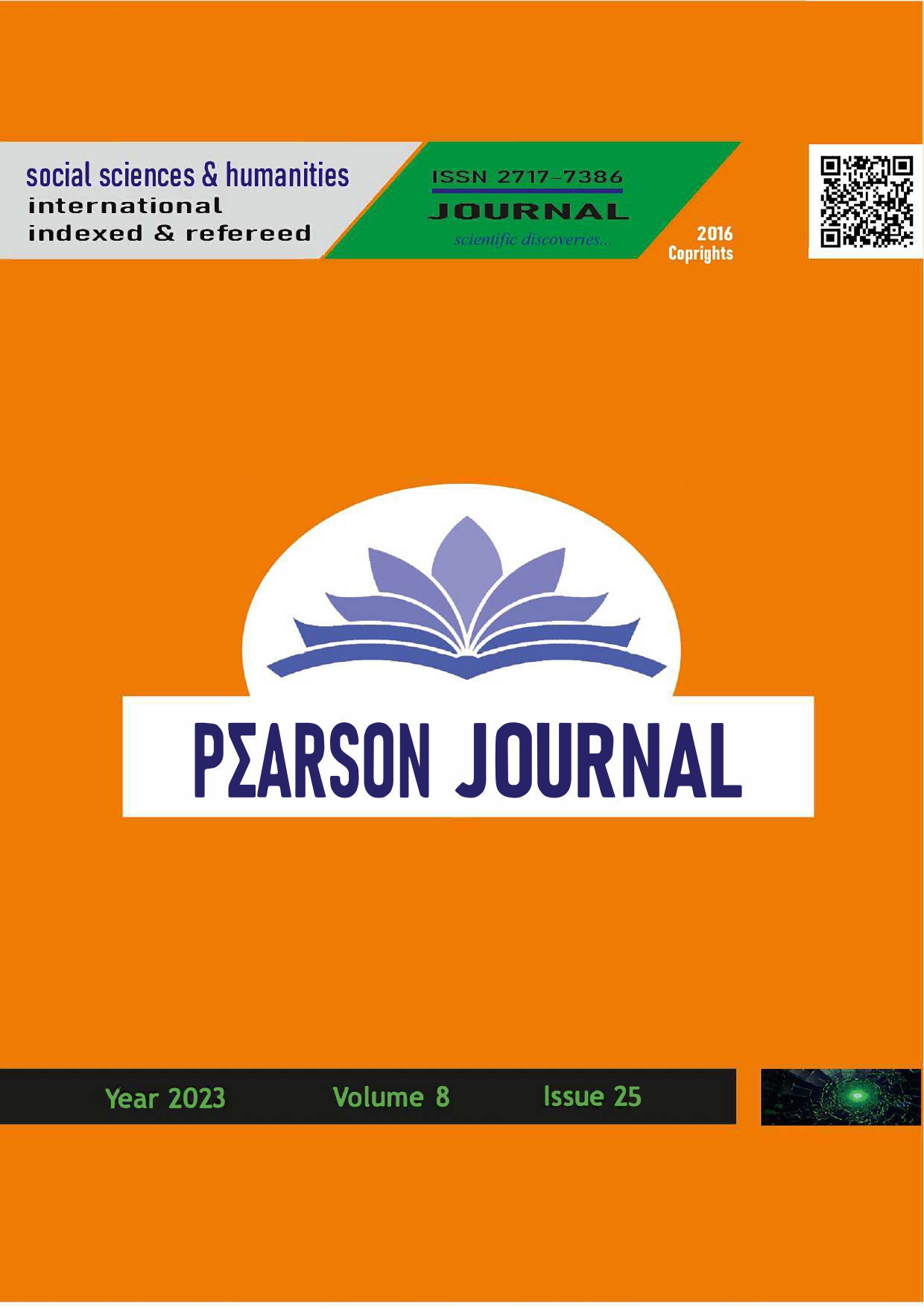Telafi Edici Ve Etkinlik Hipotezlerine Dair Ampirik Kanıtlar: Kırılgan Beşli Örneği
DOI:
https://doi.org/10.5281/zenodo.8365713Anahtar Kelimeler:
Telafi Edici Etki Hipotezi, Etkinlik Hipotezi, Sanayisizleşme Hipotezi, Eşbütünleşme, NedensellikÖzet
Küreselleşmenin iktisadi ve ticari etkisi, ülkelerin ekonomik işbirliği ve entegrasyonu, krizlerin tüm dünyayı aynı anda etkilemesi gibi sebeplerden dolayı ülke ekonomileri dışsal risklere maruz kalabilmektedirler. Bu durumda hükümetler uygulayacağı politikalar ile ülke refahını koruyabilir veya zararı en aza indirebilir. Bu bağlamda literatürde ve iktisat teorisinde kabul gören üç hipotez söz konusudur. Bunlar, telafi edici etki hipotezi (Cameron: 1978; Rodrik: 1996), etkinlik hipotezi (Cusack: 1997) ve sanayisizleşme hipotezi (Clark: 1940; Iversen & Cusack: 2000) olup dışa açıklık ile kamu harcamaları değişkenleri ile sınanmaktadır. Bu bağlamda çalışmada kırılgan beşli olarak bilinen Endonezya, Brezilya, Güney Afrika, Hindistan ve Türkiye ekonomileri için üç hipotezden hangisinin geçerli olacağı sınanmıştır. Panel veri analiz yöntemlerinden yatay kesit bağımlılık testi, Smith vd. (2004) Bootstrap birim kök testi, LM Bootstrap panel eşbütünleşme testi, Canning ve Pedroni (2008) nedensellik testi, CCE katsayı tahmin testi uygulanmıştır. Elde edilen analiz sonuçları Brezilya hariç, diğer ülkelerde etkinlik hipotezinin geçerli olduğunu gösterirken sadece Brezilya’da sanayisizleşme hipotezinin geçerli olduğu sonucuna ulaşılmıştır.
Referanslar
Altay, A. & Aysu, A. (2013). Etkinlik ve telafi edici etki hipotezi: Seçilmiş ülkeler üzerine ampirik bir inceleme, TİSK Akademi, 8(15), 130-154.
Aydoğuş, I. & Topçu, M. (2013). An investigation of co-integration and causality between trade open¬ness and government size in Turkey, International Journal of Economics and Financial Issues, 3(2), 319-323.
Benarroch, M. & Pandey M. (2008). Trade openness and government size, Economics Letters, 101, 157-159.
Benarroch, M. & Pandey, M. (2012). The relationship between trade openness and government size: Does disaggregating government expenditure matter? Journal of Macroeconomics, 34(1), 239–252.
Borghi, E. (2008). Trade openness and public expenditure on labor market policies, University Of Milano, September 1, 1-21.
Cameron, D. R. (1978). The expansion of the public economy: A comparative analysis, The Americal Political Science Review, 72(4), 1243-1261.
Canning, D. & Pedroni, P. (2008). Infrastructure, long-run economic growth and causality tests for cointegrated panels. The Manchester School, 76(5), 504-527.
Clark, C. (1940). The Conditions of Economic Progress, McMillan.
Cusack, R. T. (1997). Partisan politics and public finance: Changes in public spending in the industrialized democracies, 1995-1989, Published by Springer, 91(314), 375-394.
Dasgupta, S. & Singh A. (2006). Manufacturing, services and premature deindustrialization in developing countries, Helsinki United Nations University Research Paper, No. 2006/49.
Garret, G. (2001). Globalization and government spending around the world, Studies in Comperative International Develeopment, 35(4), 3-29.
Garrett, G. & Nickerson, D. (2001). Globalization, Democratization and Government Spending in Middle Income Countries.
Granger, C. W. (1969). Investigating causal relations by econometric models and cross-spectral methods, Econometrica: Journal of the Econometric Society, 424-438.
Gül, E., Ekinci, A. & Konya S. (2009). Türkiye’de İstihdam Politikaları: Yapısal Bir Analiz, Bursa: Ekin.
Güney, A. & Balkaya, E. (2018). Kamu harcamaları ve ticari açıklığın işsizlik ve genç işsizliğe etkisi, Sinop Üniversitesi Sosyal Bilimler Dergisi, 2(2). 49-74.
Hansson, A. & Olofsdotter, K. (2008). Integration and the structure of public spending. Comparative Political Studies. 41(7), 1001-1027.
Iversen T. & Cusack T. R. (2000). The causes of welfare state expansion: Deindustrialization or globalization?, World Politics. 52(3), 313-349.
İslam, M. Q. (2004). The long run relationship between openess and government size: Evidence from bounds test, Applied Economies, 36(9), 995-1000.
Kaufman, R. R. & Segura-Ubiergo, A. (2001). Globalization, domestic politics and social spending in Latin Amerika: A time-series cross-section analysis, 1973-97. World Politics. 53(4), 553-587.
Liberati, P. (2007). Trade openness, capital openness and government size, Journal of Public Policy, 27(2), 215–247.
Lin, F., Li, B. & Sim, N. C. (2014), Trade openness and government size of small developing countries: An instrumental approach, Economics of Transition, 22(4), 783-808.
Pesaran, H. M. & Yamagata, T. (2012). Testing CAPM with a large number of assets, Discussion Papers 12/05, Department of Economics, University of York.
Pesaran, M. H. (2004). General diagnostic tests for cross section dependence in panels, Cesifo Working Paper Series, 1229, Cambridge.
Pesaran, M. H. (2006). Estimation and inference in large heteregenous panels with a multifactor error structure, Econometrica, 74(4), 967-1012.
Pesaran, M. H. & Yamagata, T. (2008). Testing slope homogeneity in large panels. Journal of Econometrics, 142(1), 50-93.
Porto, A., Porto, N. & Garbero, N. (2016). The impact of globazation on subnational expenditures efficiency and compensitaion effects, Journal of Finance and Economics, 4(2), 1-22.
Reis Mourão, P. (2007). Has trade openness increa¬sed all portuguese public expenditures? A detailed time-series study. Financial Theory and Practice, 31(3), 225-247.
Rodrik, D. (1996). Why do more open economies have bigger governments, NBER Working Paper 5537, 1-47.
Sarı, E. (2017). Kamu büyüklüğü ve dışa açıklık arasındaki ilişki: Ampirik bir analiz, Adnan Menderes Üniversitesi Sosyal Bilimler Enstitüsü Maliye Anabilim Dalı Yüksek Lisans Tezi.
Schulze, G. G. & Ursprung, H. W. (1999). Globalisation of the economy and the nation state, The World Economy, 22(3), 295-352.
Sener, S., Bayrakdar, S. & Hacioğlu, V. (2015). The analysis for the validity of compensation and ef¬ficiency hypotheses in Turkey between 1975 and 2013. Procedia-Social and Behavioral Sciences, 195, 624-631.
Shahbaz, M., Rehman, H. & Amir, N. (2010). The impact of trade and financial openness on government size: A case study of Pakistan, Journal of Qualıty and Technology Management, IV(1), June, 105-118.
Smith, L.V., Leybourne, S., Kim, T.H. & Newbold, P. (2004). More powerful panel data unit root tests with an apllication to mean reversion in real exchange rates, Journal of Apllied Econometrics, 19, 147-170.
Tatoğlu, F. (2017). Panel Zaman Serileri Analizi, Beta Yayınevi, İstanbul.
Tuncer, G. (2016). Telafi hipotezinin Türkiye’de geçerliliği: Bölgesel panel veri analizi, Dumlupınar Üniversitesi Sosyal Bilimler Dergisi, 48, 144-154.
Tütüncü, A. & Zengin, H. (2019). Telafi ve etkinlik hipotezlerinin MINT ülkeleri için geçerliliğinin incelenmesi, Anadolu Üniversitesi Sosyal Bilimler Dergisi, 19(1), 81-94.
Westerlund, J. & Edgerton, D.L. (2007). A panel bootstrap cointegration test, Economic Letters, 97, 185-190.
Westerlund, J. (2007). Testing for error correction in panel data. Oxford Bulletin of Economics and Statistics, 69(6), 709-748.
İndir
Yayınlanmış
Nasıl Atıf Yapılır
Sayı
Bölüm
Lisans
Telif Hakkı (c) 2023 PEARSON JOURNAL

Bu çalışma Creative Commons Attribution 4.0 International License ile lisanslanmıştır.


